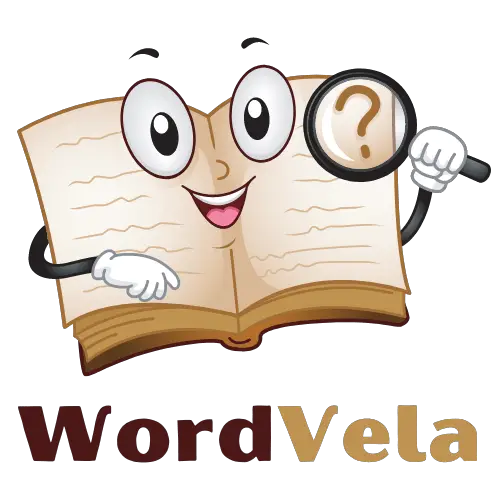Is Comb a Verb? Understanding the various functions of this word can be perplexing. When used as a verb, “comb” refers to the action of untangling or arranging hair with a comb. However, it can also serve as a noun, denoting the actual tool used for this purpose.
In a broader sense, “comb” can even be employed metaphorically to describe the thorough search or examination of a particular area or subject.
Despite its seemingly simple appearance, the word “comb” offers a burst of complexity in its usage, showcasing the intricacies of the English language.
Is Comb a Verb?
Yes, “comb” can function as a verb. When used in this capacity, it signifies the act of untangling or arranging hair with a comb. However, “comb” is not limited to just being a verb; it can also be utilized as a noun, representing the physical tool used for grooming hair.
Additionally, this word holds metaphorical potential, as it can be employed to depict a thorough search or examination of a specific area or subject.
Is Comb a Noun or Verb?
The dual nature of the word “comb” as both a noun and a verb can be quite perplexing for those delving into the intricacies of the English language.
When used as a verb, “comb” denotes the action of untangling or arranging hair using a comb, while as a noun, it refers to the physical tool employed for grooming hair.
Yes, “comb” can be a verb and a noun! It has two main functions:
Noun: A comb is a toothed tool used for grooming hair, removing debris, or arranging fibers.
Verb: To comb something means to use a comb on it, typically for straightening, smoothing, or searching through it.
Here are some examples of “comb” used as a verb:
As you can see, “comb” as a verb can be used with different objects and intentions.
So, the answer is yes, “comb” is definitely a verb, adding versatility and action to your vocabulary!
How to Use Comb in A Sentence?
Here are a few examples of using the word “comb” in a sentence:
The Definition of Comb:
“Comb” can function as both a verb and a noun, adding layers of complexity to its usage. When employed as a verb, it signifies the action of untangling or arranging hair with the aid of a comb.
Meanwhile, as a noun, it represents the physical grooming tool itself. Furthermore, “comb” offers metaphorical potential, describing a thorough search or examination of a specific area or subject.
This multifaceted nature of “comb” showcases the richness and depth of language, providing a burst of complexity within its seemingly straightforward exterior.
The Verb Form of Comb:
The verb form of “comb” adds a layer of nuance to its usage, encompassing the action of untangling or arranging hair with a comb. When using “comb” as a verb, one engages in the meticulous process of grooming, whether to detangle knots or to style hair.
This verb form of “comb” extends beyond its literal meaning, allowing for metaphorical applications in contexts that require a thorough search or examination.
Is Comb a Transitive Verb?
“Comb” can be used as both a transitive and intransitive verb, depending on the context and sentence structure.
Transitive verb:
When “comb” has a direct object, it functions as a transitive verb. This means the action of combing directly affects another object.
Examples:
Intransitive verb:
In sentences where “comb” does not have a direct object, it acts as an intransitive verb. This means the action of combing is complete in itself and doesn’t require another object to receive it.
Examples:
Therefore, “comb” is quite versatile, acting as both a transitive and intransitive verb depending on the sentence structure and presence of a direct object. Remember to analyze the context to determine its function in each case.
Common Misconceptions:
Common misconceptions about the word “comb” may abound, leading to perplexity among language enthusiasts. One such misconception is the limited understanding of “comb” solely as a verb or noun, when in fact, it has multifaceted functions.
While it indeed serves as a verb, denoting the action of untangling or arranging hair with a comb, it also functions as a noun, representing the physical tool used for grooming.
Additionally, the metaphorical use of “comb” to depict a thorough search or examination of a specific area or subject often goes unnoticed.
Comb Use as Noun:
The use of “comb” as a noun holds significant depth and versatility within the English language. When employed in this capacity, “comb” represents the physical tool utilized for grooming, untangling, or arranging hair.
This seemingly straightforward noun, with its varied functions, adds a burst of complexity to its usage.
Whether it is the fine-tooth comb for detangling knots or the broader metaphorical depiction of a thorough search, “comb” as a noun offers a rich and multifaceted understanding that showcases the intricacies of language.
Conclusion: Is Comb a Verb?
The multifaceted nature of the word “comb” prompts a burst of complexity in understanding its usage as a verb. When “comb” is employed as a verb, it encompasses the action of untangling or arranging hair with a comb, showcasing its versatility in grooming practices.
This verb form of “comb” extends beyond its literal meaning, allowing for metaphorical applications in contexts that require a thorough search or examination.
The nuanced understanding of the verb form of “comb” provides insight into the richness and depth of language, offering a burst of complexity within its seemingly straightforward exterior.
FAQs
Is “comb” a Verb?
Yes, “comb” can function as a verb, denoting the action of untangling or arranging hair with a comb.
Can “comb” Also Be Used as A Noun?
Yes, “comb” can also serve as a noun, representing the physical tool used for grooming hair.
How Is “comb” Used Metaphorically?
“Comb” can be employed metaphorically to describe a thorough search or examination of a particular area or subject.
Can You Provide Examples of Using “comb” in A Sentence?
Sure! Examples include “She carefully combed through her tangled hair” and “The detective decided to comb through the evidence for any overlooked clues.”
Is “comb” a Transitive Verb?
Yes, when “comb” is used as a transitive verb, it requires a direct object to complete its meaning, such as in the sentence “She combed her hair.”
Latest Posts!
- 9 Proper Ways to Sign a Letter on Behalf of Someone Else!
- Do You Put a Comma After Yesterday? Here Defined:
- 12 Professional Ways to Say I Will Keep You Posted!
- 10 Other Ways to Say Well Received in An Email!
- 12 Other Ways to Say Thank You for Your Attention!
- Secretary’s or Secretaries’ or Secretaries? Which Is Correct?











Leave a Reply